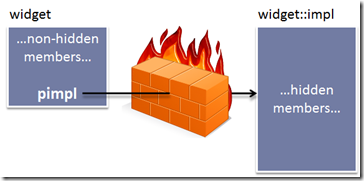With so much happening in the computing world, now seemed like the right time to write “Welcome to the Jungle” – a sequel to my earlier “The Free Lunch Is Over” essay. Here’s the introduction:
Welcome to the Jungle
In the twilight of Moore’s Law, the transitions to multicore processors, GPU computing, and HaaS cloud computing are not separate trends, but aspects of a single trend – mainstream computers from desktops to ‘smartphones’ are being permanently transformed into heterogeneous supercomputer clusters. Henceforth, a single compute-intensive application will need to harness different kinds of cores, in immense numbers, to get its job done.
The free lunch is over. Now welcome to the hardware jungle.
From 1975 to 2005, our industry accomplished a phenomenal mission: In 30 years, we put a personal computer on every desk, in every home, and in every pocket.
In 2005, however, mainstream computing hit a wall. In “The Free Lunch Is Over” (December 2004), I described the reasons for the then-upcoming industry transition from single-core to multi-core CPUs in mainstream machines, why it would require changes throughout the software stack from operating systems to languages to tools, and why it would permanently affect the way we as software developers have to write our code if we want our applications to continue exploiting Moore’s transistor dividend.
In 2005, our industry undertook a new mission: to put a personal parallel supercomputer on every desk, in every home, and in every pocket. 2011 was special: it’s the year that we completed the transition to parallel computing in all mainstream form factors, with the arrival of multicore tablets (e.g., iPad 2, Playbook, Kindle Fire, Nook Tablet) and smartphones (e.g., Galaxy S II, Droid X2, iPhone 4S). 2012 will see us continue to build out multicore with mainstream quad- and eight-core tablets (as Windows 8 brings a modern tablet experience to x86 as well as ARM),
and the last single-core gaming console holdout will go multicore (as Nintendo’s Wii U replaces Wii).
This time it took us just six years to deliver mainstream parallel computing in all popular form factors. And we know the transition to multicore is permanent, because multicore delivers compute performance that single-core cannot and there will always be mainstream applications that run better on a multi-core machine. There’s no going back.
For the first time in the history of computing, mainstream hardware is no longer a single-processor von Neumann machine, and never will be again.
That was the first act. . . .
I hope you enjoy it.
 JG Question
JG Question